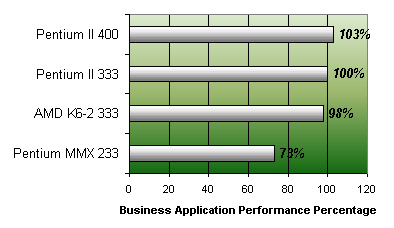Plug it in: Sockets vs Slots - The Future
by Anand Lal Shimpi on October 19, 1998 5:25 PM EST- Posted in
- CPUs
Why bother you all with a lesson in microprocessor history? It has often been said that history repeats itself, and if you were to step back from the current state of the microprocessor industry, it's almost inevitable that you would notice a definite trend forming before your eyes.
Let's fast forward a little past AMD's race to catch up to Intel with the original Pentium, and move to the days of the Pentium MMX. Not too long after Intel's release of the Pentium MMX, AMD finally had the answer to their prayers ready and waiting for a debut, the AMD K6. The K6 was pin-for-pin compatible with the Pentium MMX, and on paper, it offered much more for the money, but would it be a success? After its release, the K6 turned out to be an overall success, although it did have a weak presence among the heavy 3D gaming community it wasn't too harshly bashed for its shortcomings in the FPU area for quite some time. Offering a viable alternative to Intel, often times at an equal or lower cost (initial production difficulties set aside), AMD had a sure fire winner on their hands...Intel's solution?
Change the interface specification for the most popular processors of the time, this time around, the Pentium MMX was on the verge of repeating history...sound familiar? It should. No longer than a month after AMD's debut of the K6, Intel released their Pentium II which made use of an entirely new interface design, abandoning the Socket-7 standard for a slot based interface, one we've come to know as Slot-1. If you're beginning to notice the trend more prominently now, let's compare it to the past, a more "advanced" Slot-1 design which theoretically allows for a more advanced processor to be run on the motherboard in comparison to Socket-7 which is now entirely supported by Intel's competitors.
Slot-1: The Socket-5 of the Pentium II
More or less, one could say, that clock for clock, the Pentium II and AMD's Socket-7 based answer, the K6-2, are virtually equivalent in terms of overall performance. All 3D Gaming and CAD performance set aside, both mainly FPU dependent in which case the Pentium II's advanced dual pipelined FPU gives it the lead over the K6-2, the Pentium II and K6-2 can be placed side by side for a comparison, at the same clock speed, and very few users would notice the difference.

Figure 1. Processor Performance Comparison as a
Percentage
Does this seem reminiscent of the limited days of the Socket-5 standard? While Socket-5 eventually reached speeds of 133MHz, it wasn't until Socket-7 was introduced that processors started to pick up in performance at a more rapid rate. What users discovered is that their future upgrade path that they were promised turned out to be nothing more than an option to purchase a 133MHz Pentium or a blatantly overpriced Socket-5 overdrive processor. How comforting.
It is highly unlikely that Slot-1 will continue to be the dominant interface design from Intel as time goes on, with the introduction of the Katmai and the Socket-370 based Celeron processors in the very near future, Intel will probably abandon Slot-1 in favor of a more distancing architecture, possibly, Slot-2; therefore maintaining the gap between themselves and AMD as well as the rest of the competition. It will be interesting to see what the future upgrade path we're being guaranteed now will turn out to be in the next year, it looks like we're almost on the verge of another one of those spontaneous specification changes...wonder what it'll be...










1 Comments
View All Comments
waylanmarx - Wednesday, August 18, 2021 - link
That’s why you are recommended to check out the terms and conditionshttps://zz-cash.com